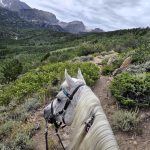I was 5 years old when I first told my parents I wanted to be a veterinarian. As the third of three kids, there were not nearly as many photos of me as there were of my older brother and sister. Nevertheless, nearly every photo of me included an animal of some kind… dogs, horses, chickens, ducks… I gravitated towards animals from the day I could walk.

In my early teen years, I realized that many children didn’t have the stable family and the advantages that I did. It was at that point in my life that I decided I would like to adopt children. I achieved both goals… I received my veterinary degree in 1982 and adopted my first child in 1989 after giving birth to a son and a daughter.
My adoptees arrived with serious mental health issues. My veterinary career derailed after I started a local support group for families parenting children with attachment and trauma issues. It grew into a national non-profit (www.attachtrauma.org). Now, instead of helping pet parents make good decisions about animal husbandry, I was helping adoptive parents maintain challenging placements.
I share this simply to make the point that caring for people and animals has been a lifelong pursuit of mine. Whether it was educating clients about medical options or treatments for their pets or educating parents about how to survive living with emotionally disturbed children, I was all about helping people make informed decisions for their health and safety and the safety of those they cared about.
One day, after riding by myself in the Rocky Mountains, I realized that if I had a horse accident, no one would know who I was or where I belonged. If my horse were found by a hiker in the forest, no one would know where he belonged. If I was lucky enough to be found and cared for by First Responders, they wouldn’t know what medications I took, what allergies I had, what my blood type was, or who to call in case of an emergency.
Horse related accident statistics
As March of 2025 comes to a close, I am reminded that March is Brain Injury Awareness Month. I recently presented a PowerPoint program on horse and rider safety, and I included these facts:
- Horseback riding is more dangerous than skiing or motorcycling.
- Nearly 75% of equestrian deaths are caused by head & neck injuries. (Thoracic injuries accounted for 18%.)
- 2 out of 3 riding accidents could be prevented. (Broken tack, slipped saddle, no safety check.) Professional equestrians experience more serious accidents (although less frequently). This means that riders with more experience are more likely to be injured. (This is likely because experienced equestrians are engaged in more technical equestrian pursuits.)
- Horseback riding is the leading cause of sports-related traumatic brain injuries. (45%!) The next category is Falls or Interpersonal Contact at 20%.
- Wearing a riding helmet reduces the risk of severe brain injury by 50%. (Another study says 85%.) The equestrian injury statistics show that the use of riding helmets is low while the likelihood of head injuries is high.
- 81% of equestrians get injured at some point in their riding career. 21% are seriously injured and require hospitalization.
- Over 100,000 horse-riding-related accidents occur yearly in the US. One out of 10,000 horse riders die every year in a horse accident.
- 83.4% of horse-riding injuries are caused by the rider falling off the horse. (Spooked horse, rider error, green horse, new horse.)
- Medical alert tags on the rider and ID tags on the horse won’t keep you from falling off, but they might give First Responders critical medical information to treat you safely and efficiently and increase the likelihood that your horse finds his way home. (See the referenced article here.)
Horse & Rider ID Tags
I created the first version of ID-MyHorse Emergency Information Tags for the specific purpose of providing First Responders with important medical information about me. I also attached the same tag to my saddle. The first-generation tags were larger and weighed 1.63 ounces. The tags contained important information about me and my medical history, as well as information about my horse and where he belonged. Of course, emergency contact information was included as well. The tag had the “ID-MyHorse” logo on both sides.
One day, I encountered a paramedic. He was pleased to see that I had medical information available, but he wasn’t sure his peers would recognize “ID-MyHorse” as something that contained medical and emergency information. He wanted the Red Cross logo on the tag, prominently displayed. That made a lot of sense to me, so the second-generation tag was born.
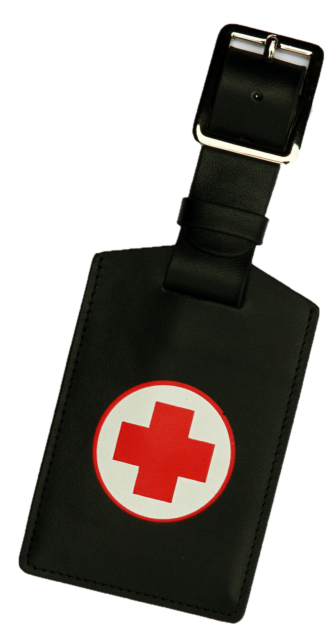
The second version was the same size as the first, but it did have the Red Cross logo on one side. The other side still had the ID-MyHorse logo. I wear the tag with the Red Cross logo readily visible. By this time in my riding adventures, I had added a Hit-Air vest to my safety equipment. The tag hangs on the front of my vest.
During the evolution of this emergency tag, my husband and I experienced two evacuations due to wildfires on our Colorado mountain and also a grass fire in Arizona that burned the house next door. I had already realized the value of these informative tags during natural disasters. We quickly realized that braiding the tags into the manes of our horses provided us with the reassurance that should we become separated for any reason, our horses would be able to find their way home. Our horses wear their ID tags 24/7.
It was after speaking with the firefighters that the third and current version of ID-MyHorse ID Tags was born. The firefighters requested reflective strips on the ID tags that were made from the same material that is present on their uniforms. These reflective strips enable the First Responders to more easily detect our horses at night or in smoky conditions. In addition to adding the reflective strips, the ID tags were reduced in size by roughly 50% and currently weigh a mere .63 ounces.

We don’t have to worry about tack being lost in the woods, and with it our ID tags. We don’t have to plan to live 24/7 in our horses’ stalls so that we can attach some last-minute ID before a fire consumes our stables or a totally unexpected flood washes away our livestock. I can tell you from first-hand experience that you are NOT LIKELY to have ANY TIME to make last-minute identification decisions before disaster strikes.
Facebook is NOT the answer if your horse is missing in the woods or was swept away by floods. Microchips are NOT the answer if your horse is one of 800 gathered at a holding point after a disaster. Don’t get me wrong… microchips have real value in some situations, but this is not one of them. How many people who find your horse in the woods have a wand (actually two, as there are two types of wands) in their back pocket and internet access to look up your information? By the way, have you kept it up to date or even entered it at all?
Less than 5% of horses in the US are microchipped. Do you think a fairgrounds manager suddenly tasked with caring for 800 horses is going to wand all of them, write down a 10–15-digit alphanumeric number along with a description of the horse, and then go look it up in multiple databases to see if you are there? There are so many databases that there is a database of databases. READILY VISIBLE ID TAGS are the ticket if you and your horse are separated.
I am still caring for people and animals… even the ones I don’t personally know. I cringe every single time I see a Facebook post about a missing horse. Some owner is desperate to get their horse back, and some horse is terrified, running along the side of the highway.
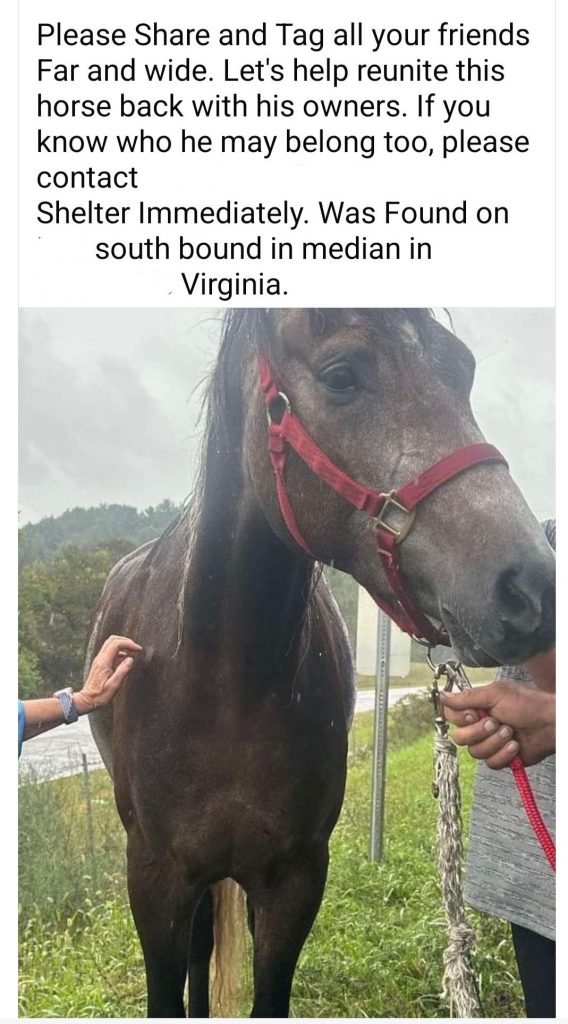

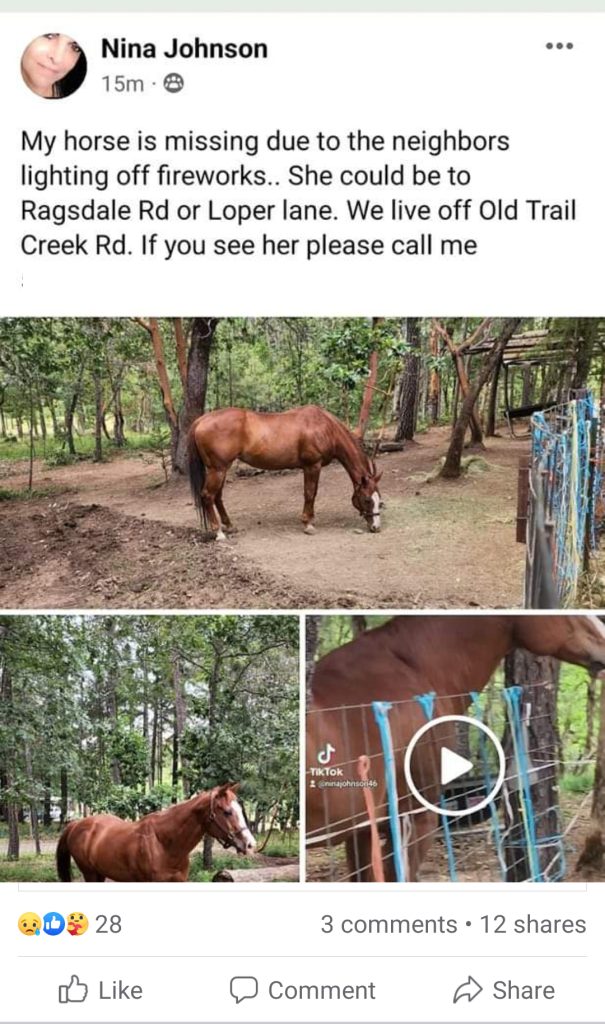
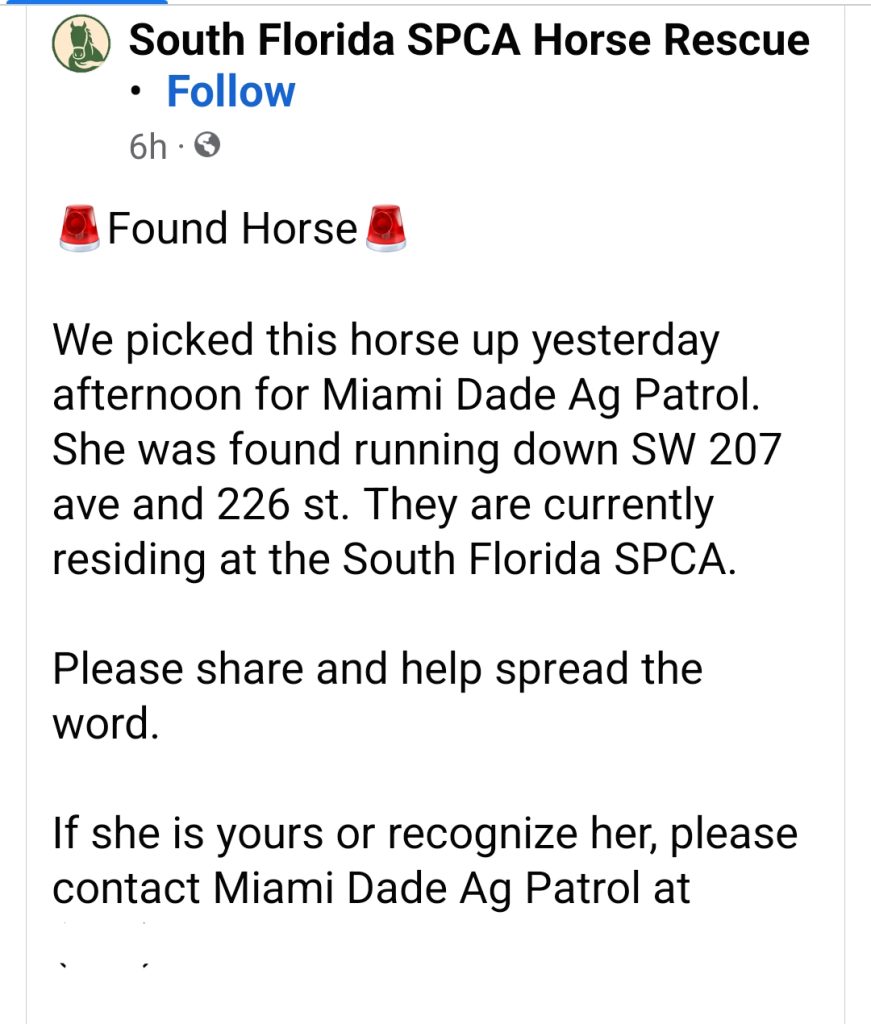
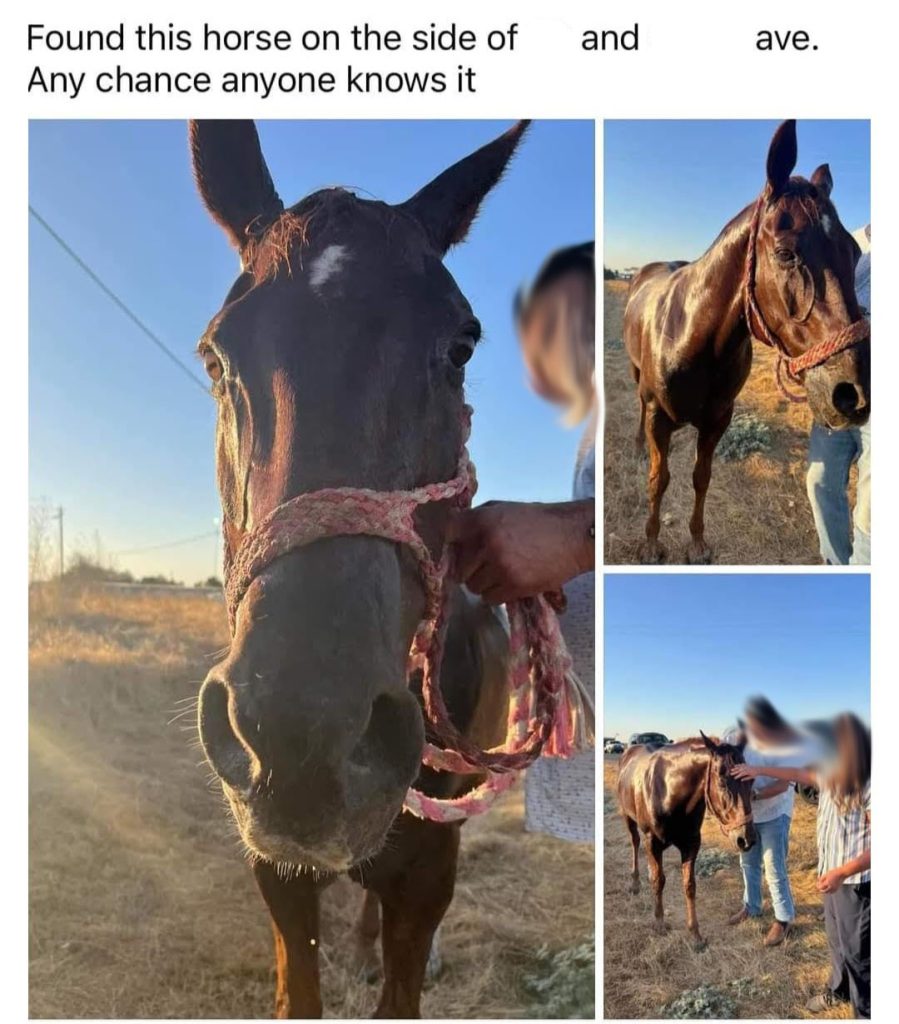
I attended an Emergency Evacuation clinic where animal First Responders from various entities pleaded with horse owners to have a plan. I have written numerous blogs about the information from that clinic, the various types of horse ID available, our personal experiences evacuating wildfires, the pros and cons of microchips, and many other topics relevant to being a prepared livestock owner.
You can read about the day we were boating on a beautiful reservoir in Fort Collins, Colorado, when our neighbor called to tell us our mountain was under mandatory evacuation and we had to come retrieve the horses. We exited the cove and headed for the marina, only to be met with the view of a horrendous mushroom cloud of smoke right over our home. It was a 45-minute trip up the mountain to our home, and we weren’t sure we’d make it in time. The only peace I had was the knowledge that our horses wore identification in case our neighbors were forced to turn them loose.
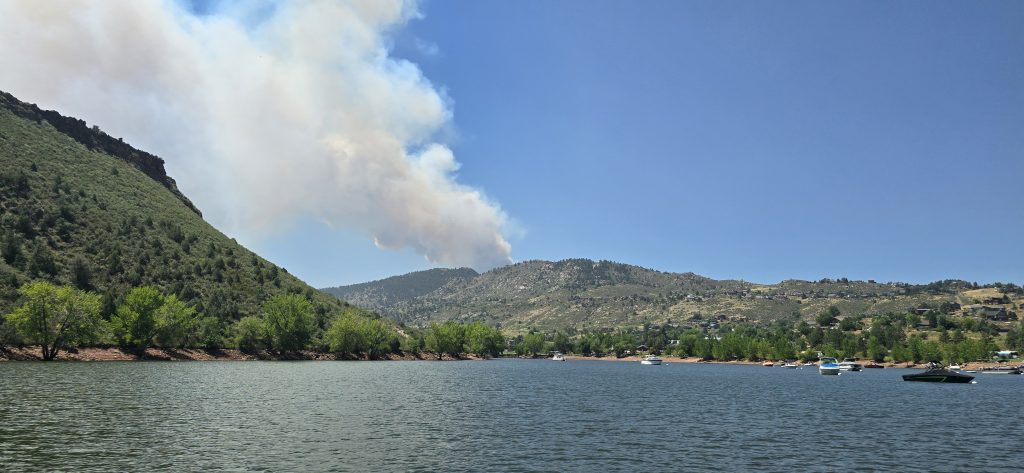
Here is a blog post about various types of horse ID currently available. I don’t want a nylon fetlock band on my horse, which would melt when exposed to embers and burning foliage on the ground. I don’t want something I have to add at the last moment… I wanted something that could stay in for weeks or months. I wanted something that wouldn’t burn and wouldn’t hurt my horse if the ID Tag snagged on a tree or debris floating in flood waters.
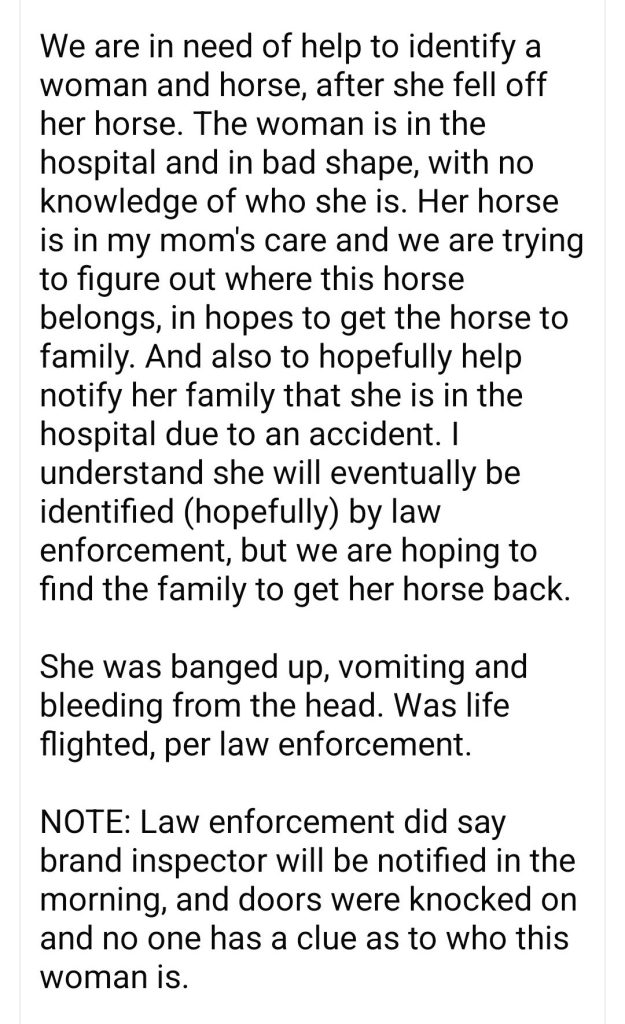
I don’t want to ever need to provide a First Responder with the information contained within my medical alert tag, but neither do I want them guessing about how to treat me should I need that information in a crisis. I don’t care what type of emergency medical ID you choose or what type of horse ID you choose, as long as you have done your research and made a plan in advance. I don’t want to see your horse advertised on Facebook because it is missing. And I don’t want to see a Facebook post about an unidentified woman in a coma who went to the hospital with no emergency contact notified. Be prepared!





